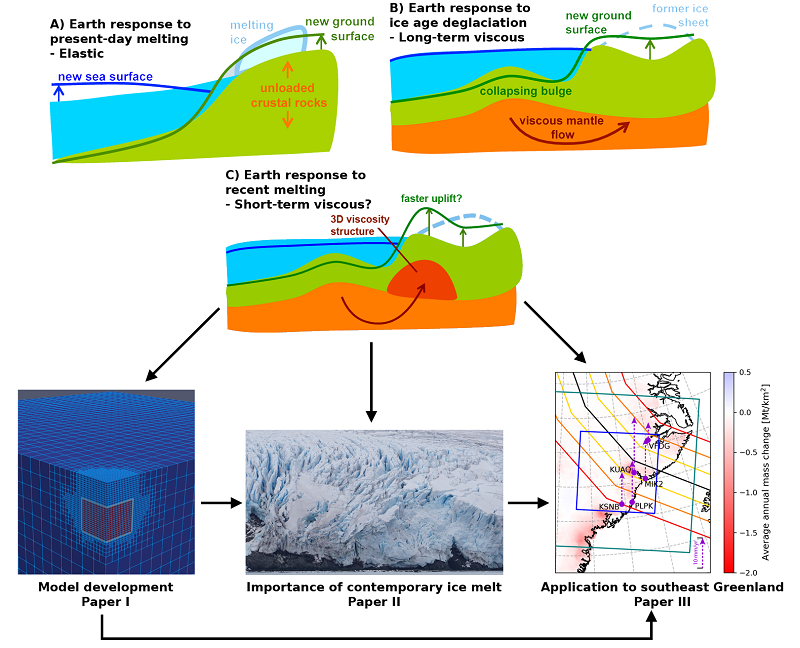Disputas og prøveforelesning vil bli holdt i Auditorium 1, Geologibygningen. Prøveforelesningen og disputasen er mulig å delta på via Zoom (videolink).
Prøveforelesning
Fredag 9 juni, 15:00-15:45, Aud 1, Geologibygningen:
Drivers and components of future sea level change
Kreeringssammendrag
Endringer i jordens klima omfordeler is- og vannmasser på jordoverflaten, noe som kan få den faste jorden til å deformere. Vi bruker vår nye og målrettede modell for deformasjon av den faste jorden og finner at rask landhevning i Sørøst-Grønland er dominert av en viskøs respons på nylig og rask deglasiasjon, som har skjedd i løpet av de siste tiårene. Dette viskøse bidraget til kunnskap om jorddeformasjon vurderes vanligvis ikke, men vil bli stadig viktigere i fremtiden ettersom deglasiasjonen akselererer.
Hovedfunn
Populærvitenskapelig artikkel om Weerdesteijns avhandling:
Solid earth deformation due to glacial mass changes above low-viscosity upper mantle: Model development, importance of contemporary ice melt, and an application to southeast Greenland
Changes to Earth’s climate redistribute masses of ice and water on Earth's surface. These loads cause the solid earth to deform, and it is commonly thought that this happens in two ways: ice age ice melting caused a long-term viscous flow that is still occurring, and modern ice melting drives an instantaneous elastic deformation. However, regions in West Antarctica and southeast Greenland are currently uplifting so rapidly that another deformation mechanism must be important. Here we study how confined regions of unusually weak rocks within Earth’s upper mantle can deform viscously, generating rapid surface uplift.
This doctoral thesis presents a new viscoelastic earth deformation model that can accommodate large lateral variations in Earth structure. We benchmark this code and use it to investigate the poorly understood role of small (~100s km) regions of unusually low-viscosity mantle beneath rapidly melting ice. We then apply our code to southeast Greenland, a region likely weakened by the Iceland plume ~40 Ma ago. We show that the uplift here is dominated by a viscous response to recent and rapid deglaciation, occurring within the past few decades. This viscous contribution is not usually considered, but will become increasingly important in the future as deglaciation accelerates.

Foto og annen informasjon:
Pressefoto: Maaike Francine Maria Weerdesteijn, portrett; 300px. Foto: Privat
Annet bildemateriale: Figur med beskrivelse og kreditering som spesifisert i artikkelen over, størrelse 1500px.
